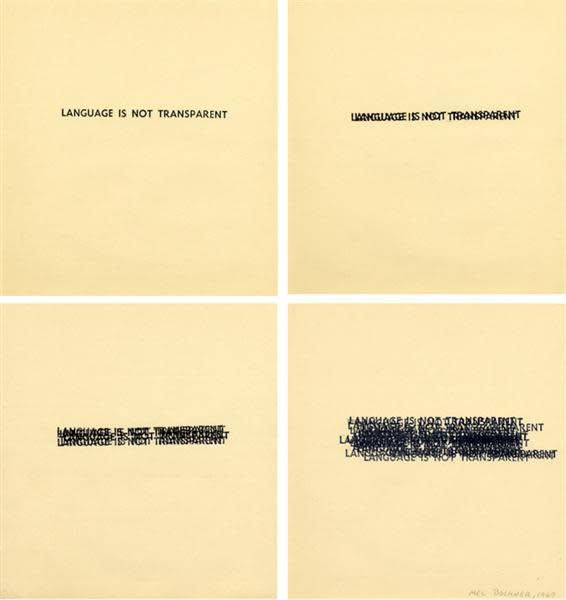After graduation from Chelsea School of Art with an MFA in 1988, Harland Miller (b.1964) spent a year in Paris. He felt homesick at times and discovered that finding and reading used copies of English-language editions of Penguin books were a comfort to him.
He painted his first Penguin book cover in 1992. The paintings, which combine nostalgia and dry humor, have made him one of England’s most popular artists. (In 2021, 'Murder - We’ve All Done It' was auctioned at Christie’s for £325,000 (about $425,000). Surprisingly, after creating these paintings for decades, Penguin threatened to sue Miller for using the iconic Penguin design. Wisely, they did not sue. Instead they commissioned him to create a series of works for them and actually gave him access to the Penguin archives in Bristol.
In addition to the Penguin series, Miller has also created other series, like the Letter Paintings, inspired by hand-drawn Medieval illuminated manuscripts and the graphics of post-war psychology publications. They focus on single, short words and letter placement.
“I’ve spoken about how people can relate to a lot of the paintings through the text in the painting,” Miller said, “and I’ve realized, you know, that while I wanted to put a certain construction of the way a text would be read…and I’ve tried to do that…through layout and typography and punctuation…in this series I’ve happily failed because, in a way, I tried to control the way people would read the text, it’s become clear to me that people read them in a way that’s entirely personal for them and this series is all the better for that.”
LUV, from the Letter Series is available at VFA, along with work from the Hell Series and other works by Harland Miller.
Mel Bochner (b.1940) uses words in a way that is often visceral and that forces the viewer to read his works, as well as view their colors, shapes and design.
His work changed, he said, when he rented a country house in 2002 and forgot to bring his thesaurus along. He went to a local bookstore to buy a new copy. He was surprised to discover that the new thesaurus was much thicker and the language much different. He was, in fact, shocked by the language and the obscene words that were included in the text. “The politics of language had changed very drastically.” he said, since his days as an art student.
He decided to read the thesaurus from cover to cover and find words that he felt were relevant to today’s culture. He found words, drew them and then added color. “I began to be very conscious of the narrative of the painting.” he said. “Older works just read up and down, like a stack of words.” In the works that he began in 2004, he said "there is a narrative that goes from polite language to stupid, irrational, unthinking to insults, which seems to be the prevailing language of today.”
Mel Bochner continues to expand his use of words and the media with which he expresses them. For Silence!, 2023, available at VFA, Bochner used cast lettering and pigmented paper to create a work, without varying colors, but with a message that gets increasingly intense at it travels down the paper.
References:
Jonathan Jones. Harland Miller’s dreams, Ken Kiff’s sensuality and the magic of Gainsborough – the week in art. The Guardian. November 18, 2022.
Harriet Lloyd-Smith. London Original Print Fair 2023: 10 prints on our radar, from Brian Eno to Tracey Emin. The Blend. March 30, 2023.
Harland Miller Teams up With London's ICA for 'Letter Painting' Limited Edition Print. Artspace. February 2, 2023.
Lucy Howie. 10 Facts About Harland Miller's Penguin Prints. MYArtBroker.Edition.
William Corwin. Mel Bochner: Seldom or Never Seen 2004-2022. The Brooklyn Rail. December-January 2003.
Jonathan Keats. Remember The New Math? The Conceptual Artist Mel Bochner Might Actually Make You Like It. Forbes. June 30, 2022.





